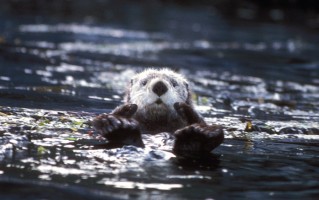One of the first and most profoundly impacted species following European colonization of the eastern Pacific was the sea otter. The sea otters were taken for their extremely dense fur first by the Russians and then by the Americans. Because of the popularity of their dense fur (100,000 to 1,000,000 hairs per square inch versus a dog with 60,000) sea otter populations around the northern Pacific crescent dropped from 150,000-300,000 to 1,000-2,000 in less than 200 years. By 1911, only half a percent of their historic populations remained in isolated populations.
And now research indicates that these kelp forests are important carbon sinks for sequestering carbon dioxide associated with climate change and ocean acidification. So we need sea otters to keep it wild but also to combat climate change and promote coastal health. We need to work to raise their numbers in California, Oregon and Washington as well as identifying what is impacting Alaska populations and deal effectively with that threat.


